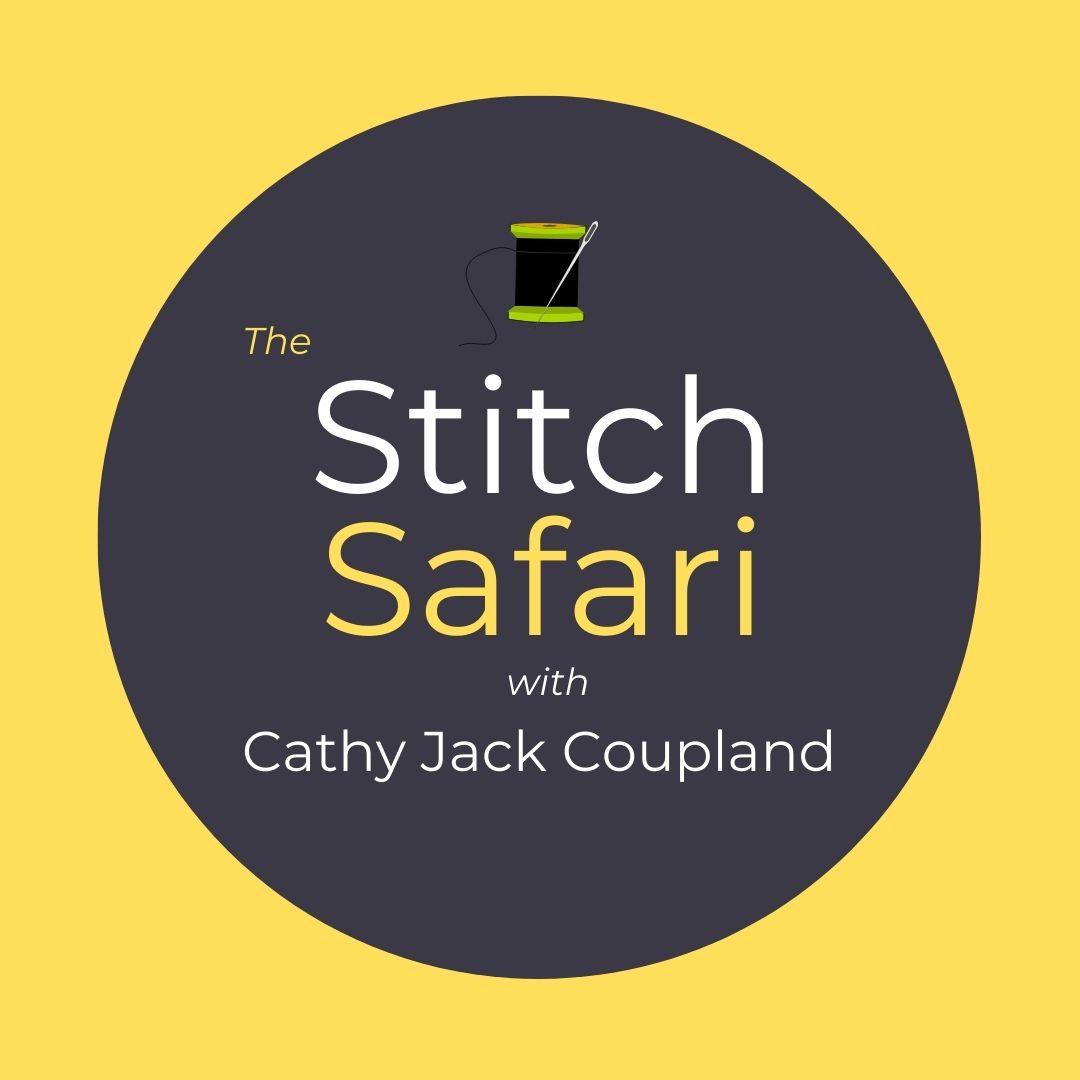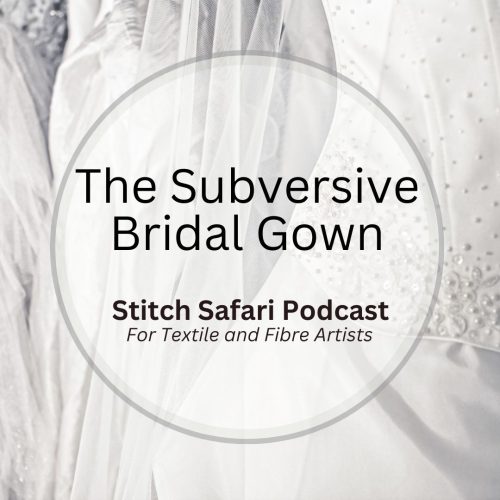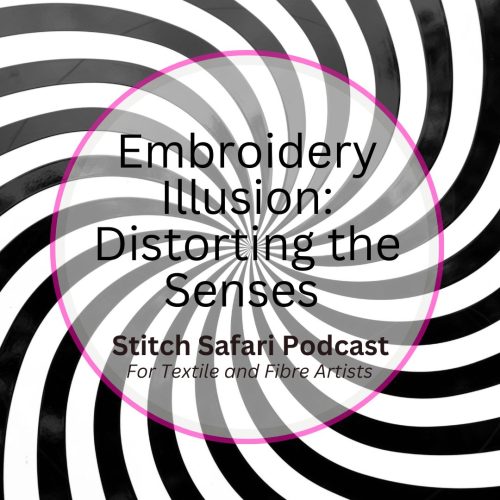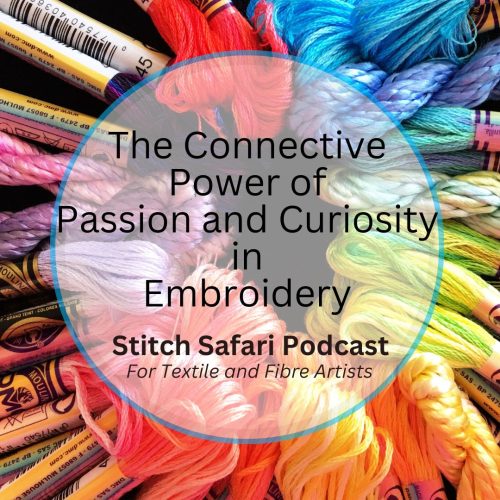I’ve now been recording Stitch Safari Podcasts since May of 2020 – and with the fullness of time, I believe I finally have my head around what I’m actually doing. Yes, it’s taken me a while – I’m a slow learner, but it’s proving popular with just over 3,500 downloads to date.
So I’m starting over, in regards to the posts supporting each podcast, asking why, why, why am I doing this? And the answer is extremely simple – it’s passion. It’s the coalescence of my passion for stitch, art, design and history, and I’m hoping other people will find it just as fascinating and mesmerising as I do.
Questions and connections kept popping into my head and the only way I could answer them was research, which I thought I’d share via the Stitch Safari Podcast. Basically, I’m learning as I go.
And it’s captivating. In this introduction episode, we journey into the beguiling world of the art of the needle – the very beginning, and I have to say, with all this research and reading some exceptional books, my passion is actually growing.
So my rationale or basic premise was simple – start at the very beginning and build on that with each episode. I’ve veered off-story a couple of times, but I’m learning here too.
Stitch, embroidery or needlework has a worldwide following, often plundering the past or leaping directly to the future, supported by myriad new research, much of which is literally, at our fingertips. Conservators, historians as well as embroiderers are improving and perfecting techniques for the care and preservation of some of the most fragile pieces of historical artifacts known to man – textiles, and through them, gaining a better understanding of our history and the contexts of that history. Textiles and embroidery form a huge part of that.
And while we live in a world of fast cars, fast food etc., embroidery’s unique appeal is that it actually encourages, if not demands, the savouring of time with each stitch. We have to slow down.
I want to pay homage to stitch art through its history, development, innovation, and usage – through updates in technology and even fashion which always pushes embroidery’s boundaries. But it’s also about people, the rich and powerful, but also the ordinary people, who either by necessity or need simply had to stitch to survive.
There’s a fascinating connection between stitch, language, trade and even education. Stitch and sewing terminology is ever-present in our daily lexicon, with some words and phrases dating back to the Bible and Greek mythology. Trade, wars and religion were the routes for the dissemination of new ideas, design styles and techniques, with many young girls becoming literate through embroidering their alphabets and numbers onto creative samplers.
I haven’t even mentioned some of the stitch-related quirky customs and superstitions, or how embroidery has been used in activism, in the women’s movement, on military uniforms or religious vestments and how it’s again coming into its own as a means for recycling and repurposing cloth, helping to save our precious resources.
From its inception, embroidery was art. Just look at the Bayeux Tapestry and the work from the period of Opus Anglicanum. It was considered a status symbol – not only displaying wealth but power, providing a performance spectacle.
And while embroidery’s ebbed and flowed in and out of favour, it’s survived.
Along with embroidery as art, come the artists who painted embroidery. Holbein, the Younger, who became so proficient in painting Blackwork embroidery, the Holbein stitch or double running stitch was named after him. Numerous other artists have used the embroiderer as their model, capturing forever, that stitch, that needle and thread and that loving look.
So it seems the more I dip my toes into this font of knowledge, the more I want to wade in and immerse myself in its potent magic. The development of that simple implement, the needle, along with a fibrous thread was really about survival enabling the fabrication of clothing as well as the means for decoration and ornamentation.
45,000 years later, we are still working with a needle and thread, whether as professionals or amateurs, alone or in community groups, for the awe-inspiring beauty or spectacle it can create or the simplicity of engaging with an enduring passion. It doesn’t matter.
So join me on this bountiful journey, as I renew a relationship with the knowledge of our amazing stitch history.
And my wish is that you become as enamoured and inspired by this history and the sheer beauty of a simple stitch as I am.
Stitch Safari Podcast is produced fortnightly. Please subscribe and leave a message because your feedback is valuable. As well as this website hub, I also post interesting tidbits on Facebook and Instagram. Embroidery’s a wonderfully welcoming world, so come along with me on numerous Stitch Safaris.





